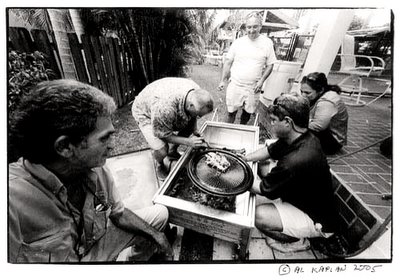Bored of Adjustment and how to photograph a victim




Okay. Here they are. Photos from last Saturday's brawl. (refer to my post, Saturday, January 28, 2006
Saturday Night Live in North Miami)
The three B&W photos show the cops on the scene, me being checked out by the paramedics, and the house next door with the drill truck in front just before I got rushed and beat up. The three color views of my face were shot the next day by my son Jonathan using a Leica M2 with an 85/2 Nikkor on Fuji 200. A small Vivitar 2500 flash on the camera gave an auto exposure at f/5.6. The B&W photos were shot with my trusty Bessa L and the 15mm Heliar.
Back in the 1960's when I was a young photographer I hung out with a bunch of young attornys. They were looking for the fast big buck and one way to try for it was a good personal injury case with a big payout. I regularly got called to go to this hospital or that, and sometimes go to an accident scene itself. I saw some pretty gory stuff. It was an era that started with Kodacolor and process C-22 and morphed into newer, faster improved films using process C-41. These were the "amateur" films that gave bright contrasty colors. Pros prided themselves in using only "pro" films like C-22 Ektacolor CPS or C-41 Vericolor VPS. Today we refer to them as "wedding and portrait" films. They have low contrast, smooth gradation, and give skin a peaches & cream complexion while minimizing imperfections. Ideal for a nice portrait. Umbrellas or bounce flash further softened things. The average pro was delivering "pretty" accident pictures from using that pro film.
I already knew that the harsh light of direct on-camera flash did little to make skin look pretty and using the amateur film, with its harsh contrast and brighter colors made everything from fresh wounds to old bruises look as ugly as possible. I got a lot of business from that technique. Also, some lenses tend to be arsher than others. Even such seemingly insignificant things as what we now call "bad bokeh" in the background create a jarring effect, influencing the way we perceieve the in-focus areas.













































